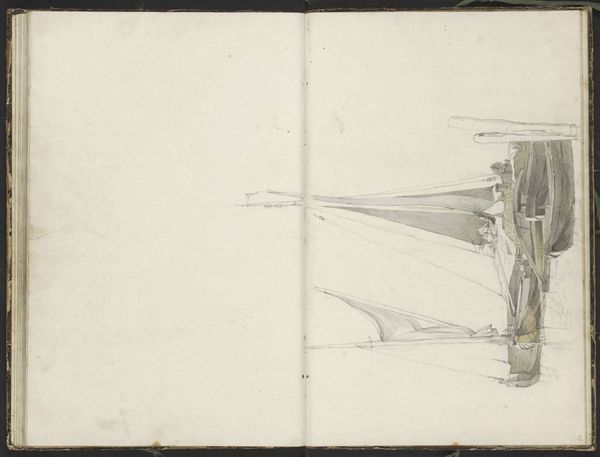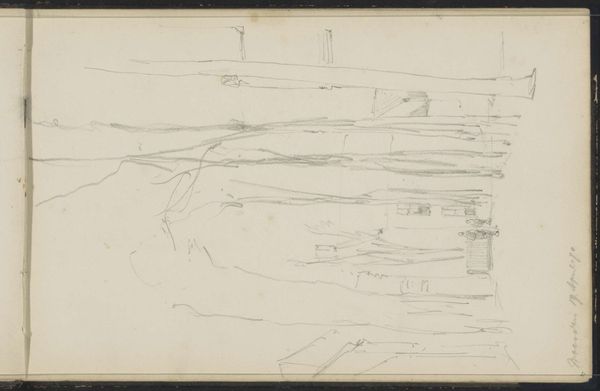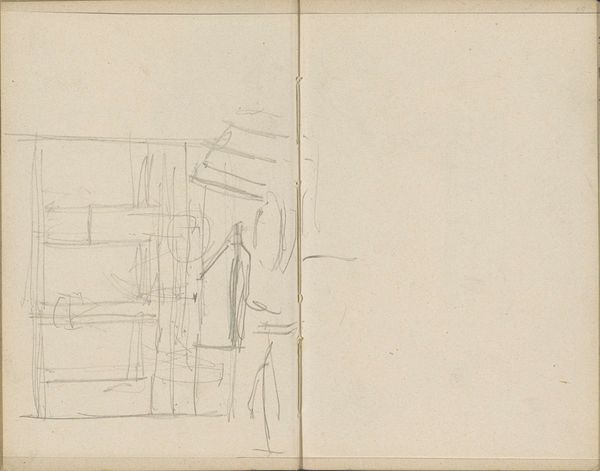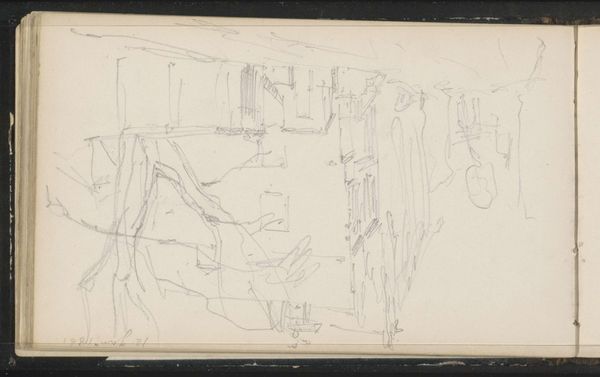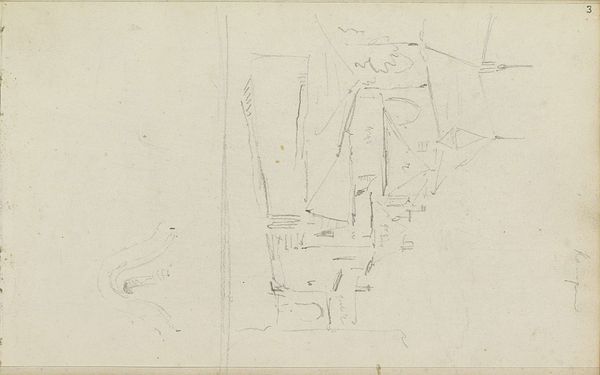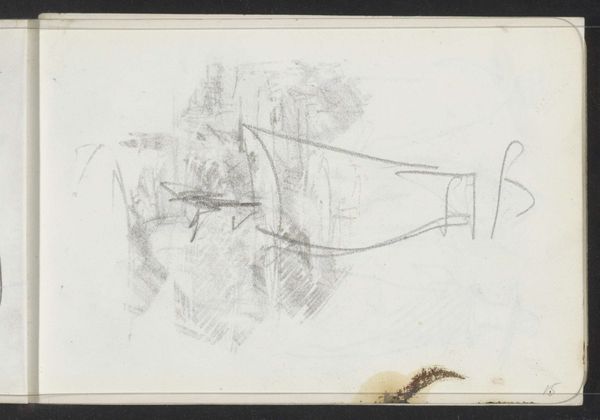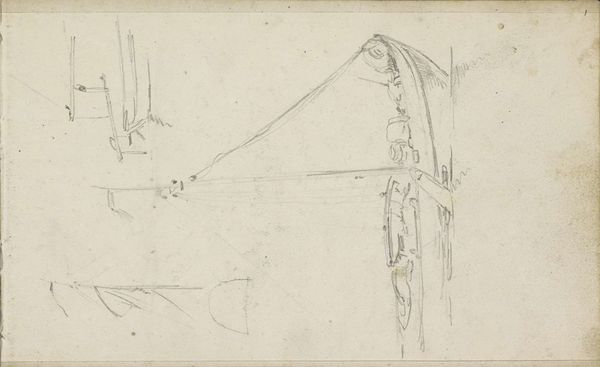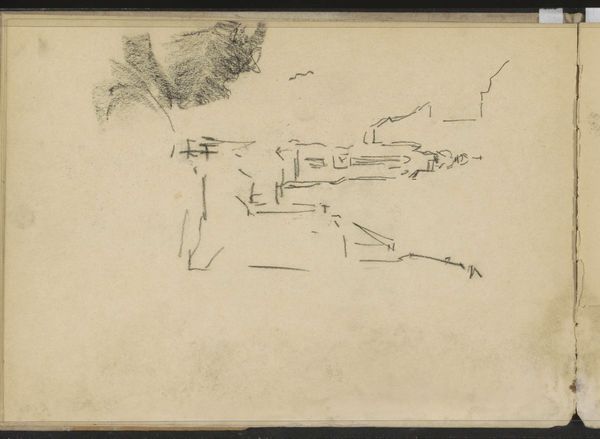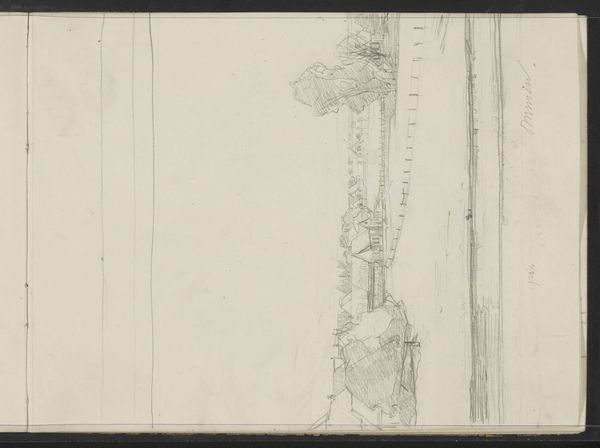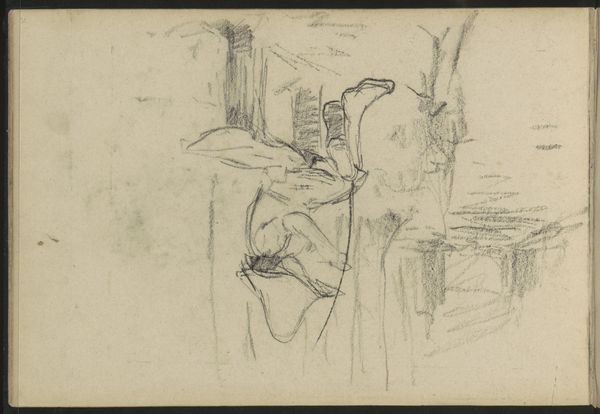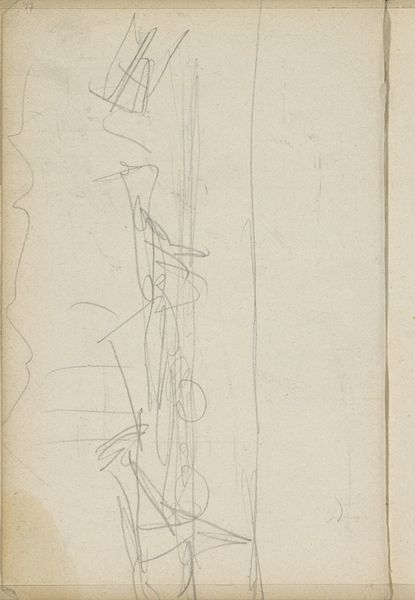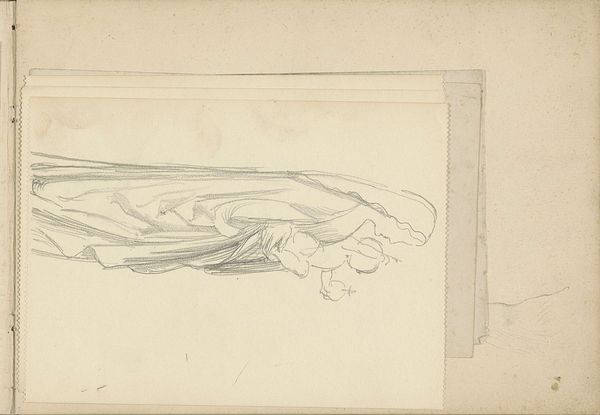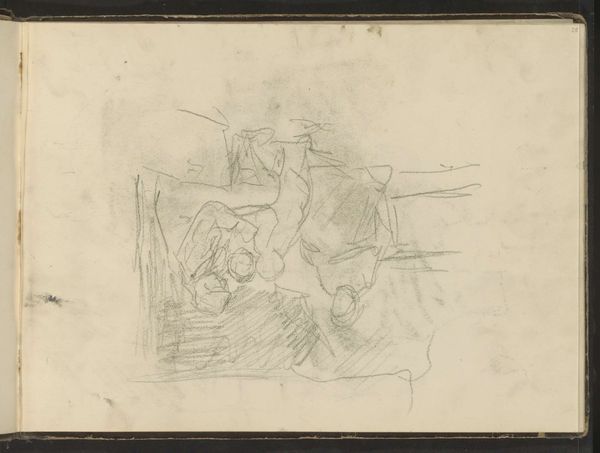
#
amateur sketch
#
toned paper
#
light pencil work
#
sketch book
#
incomplete sketchy
#
personal sketchbook
#
sketchwork
#
detailed observational sketch
#
sketchbook drawing
#
sketchbook art
Copyright: Rijks Museum: Open Domain
Editor: Here we have Cornelis Springer’s "Gezicht op een kerk," from around 1860 to 1866. It’s a light pencil sketch, and feels very immediate and personal. I’m curious, what do you see in this piece, especially considering it’s a quick study? Curator: It’s intriguing, isn't it? The seemingly simple sketch of the church isn't merely architectural; it is about imbuing space with symbolic presence. Notice how the architectural form—the church—towers above what might surround it. Consider that, culturally, the church can represent faith, community, stability... Editor: So the sketch is symbolic, even if it’s just a preliminary drawing? Curator: Precisely! Even in its nascent form, visual choices such as placement evoke deep-seated cultural memories. What feelings arise as you look at the placement? Do you see echoes of other artistic expressions, where the structure is made iconic? Editor: It feels familiar, in a way. It also gives me the impression that this isn’t just any church; it represents *the* Church, in the grand scheme of things. Curator: Good! Think of how many artistic depictions of the sacred utilize height, light, and centrality to communicate the ineffable. So, Springer’s sketch is less a casual doodle, but participates in this centuries-old symbolic visual language. Is this starting to influence how you feel? Editor: Definitely! It reframes the sketch for me, moving it away from being a simple study towards something with much deeper cultural resonance. It also gives me a way to see these sketches beyond technique and style, and as echoes of culture. Thanks! Curator: It's a pleasure to reveal how everyday images still converse in ways coded by long cultural transmission.
Comments
No comments
Be the first to comment and join the conversation on the ultimate creative platform.
